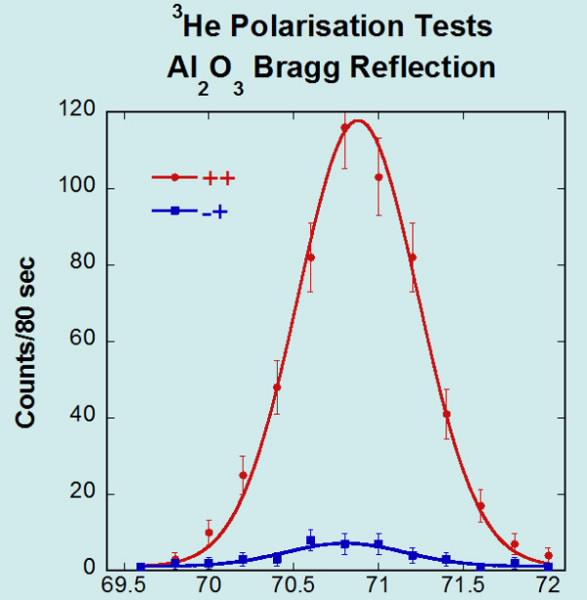

Published on the 14th September 2017 by ANSTO Staff
Sika and 3He Polarisation Team
In the current political world of sharply opposing factions in politics, it is not so common that one uses the word “polarised” in a positive manner, but in early September 2017 Sika recorded its first fully polarised neutron beam during the commissioning of 3He spin-filter cells on the cold-neutron triple-axis spectrometer at the Australian Centre for Neutron Scattering.

Polarised neutron scattering plays a key role in the microscopic understanding of the static and dynamic properties of magnetic materials and complex systems with significant incoherent scattering like biologically relevant membranes and hydrogen dynamics in confined spaces like fuel cells.
A neutron is a subatomic particle with no net electric charge but with a magnetic moment so one can think of it as a little bar magnet or arrow (spin). This particle interacts through the nuclear force with the nucleus or through electromagnetic interactions with a sample's internal magnetic fields.
In a typical experiment, the neutron beam is made up of many of these particles with the spins pointing in a random direction and the experiment averages out the effect of spin-dependent scattering. However, when necessary, instruments can polarise the neutron beam so that the eigenstate or spin of the beam is also controlled. This powerful technique allows scientists to study their materials in more detail and is frequently done to measure spin densities and magnetic fluctuations in exotic quantum magnets and to separate coherent and incoherent processes in soft condensed matter.
Using the strongly spin-dependent absorption of neutrons in nuclear-spin-polarized 3He opens up the possibility of polarising neutrons from the source. Dr Hal Lee and his team primarily use this method to polarise beams at the ACNS. Along with the SIKA team, led by Dr Jason Gardner, 3He spin filters were placed on both the incident and scattered arms of Sika. By carefully controlling the magnetic fields along the neutron path, the beam was fully polarised, with all the spins pointing up for the first time.
These are early days in the commissioning of this technique on Sika and significant progress needs to be made to optimise the degree of polarisation of the beam and the neutron absorption, but all things are looking up, and we hope to report our first scientific result at the 12th International Conference on Polarised Neutrons for Condensed Matter Investigations (PNCMI 2018) in Oxfordshire, UK.